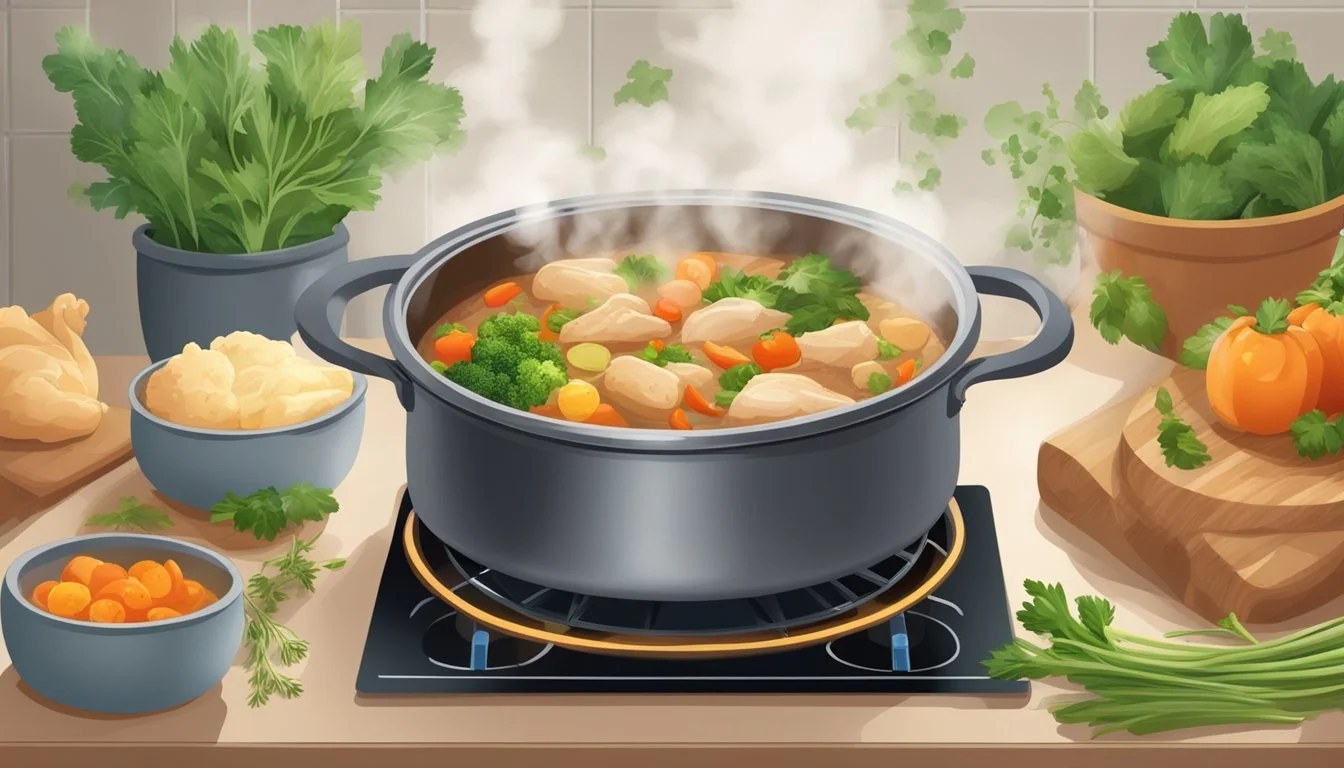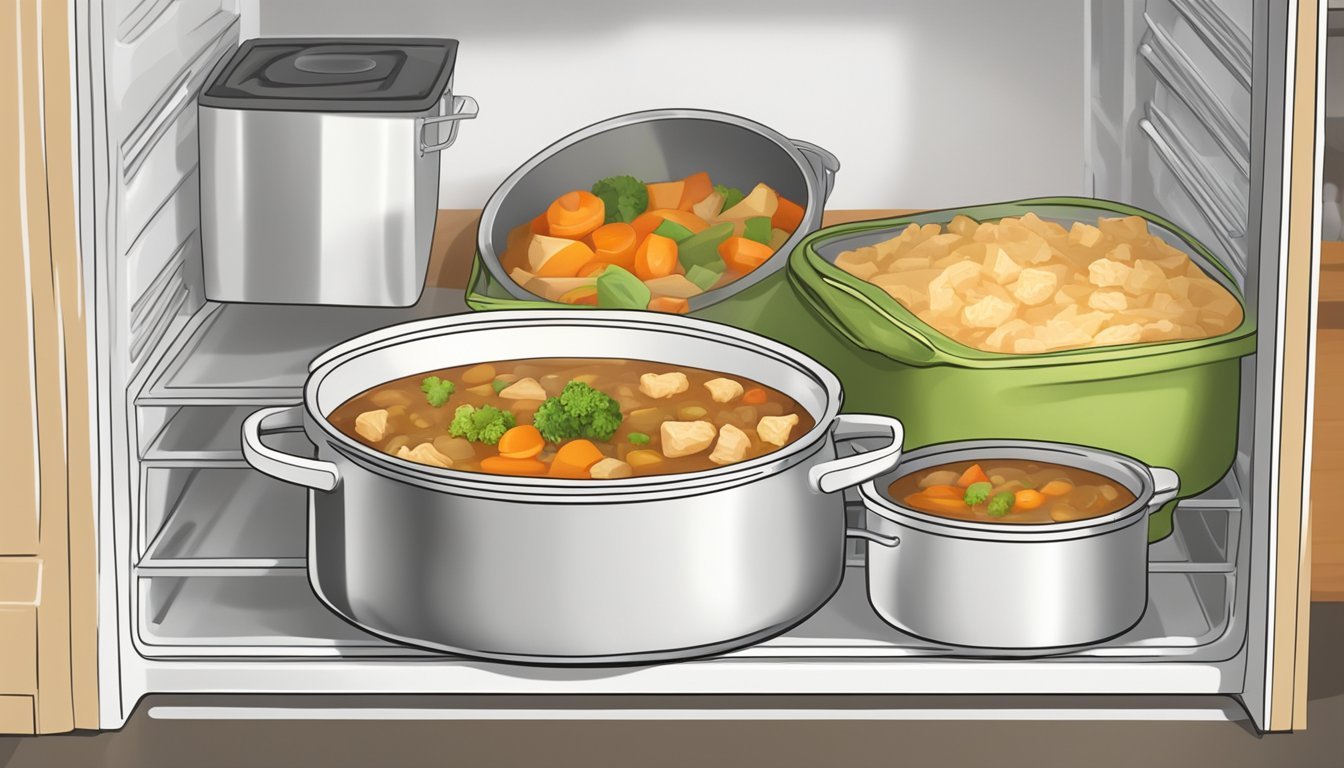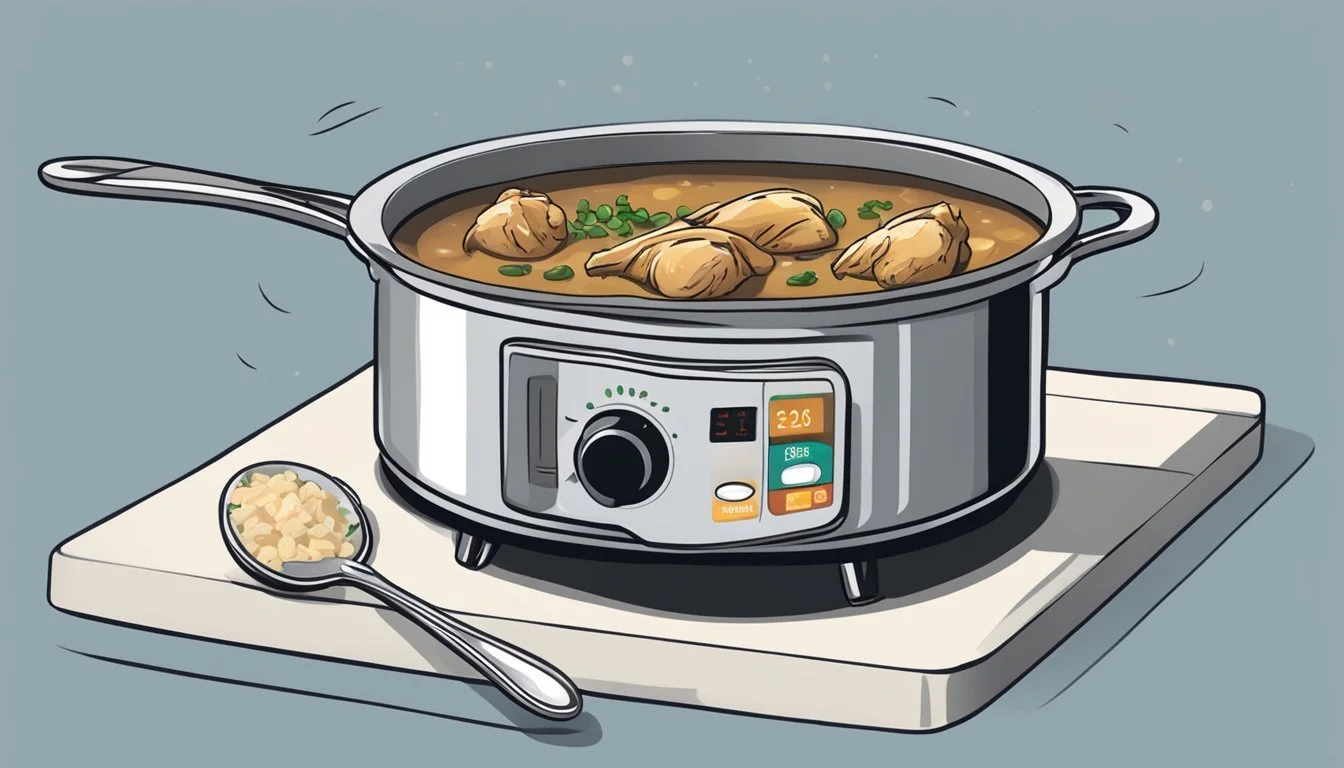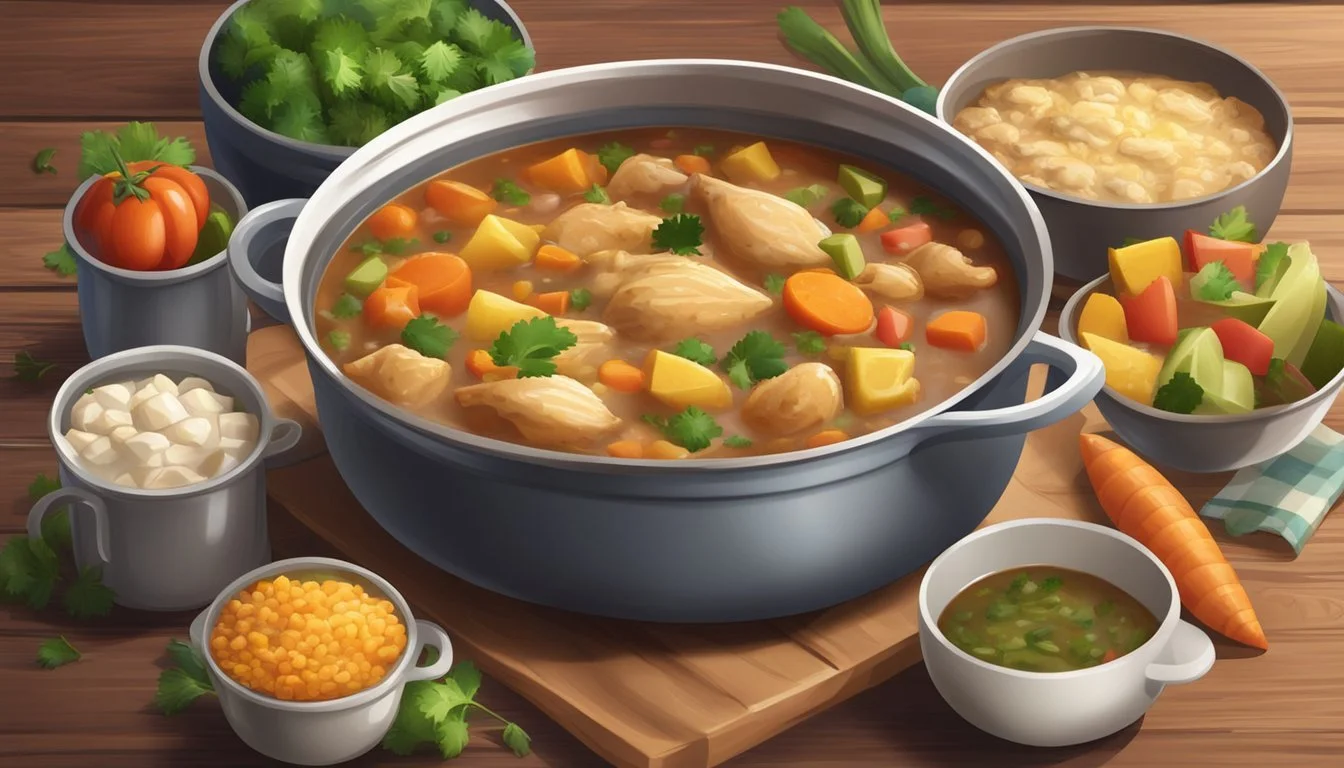How Long Does Gluten-Free Chicken Stew Last?
Storage Tips and Safety Guidelines
When cooking a hearty, gluten-free chicken stew, many home cooks wonder about its shelf life. This comforting dish, perfect for a cozy dinner, can be enjoyed for several days if stored properly. Properly stored gluten-free chicken stew can last for about 3 to 4 days in the refrigerator.
This gluten-free meal retains its flavors and textures well over a few days, making it an excellent option for meal prepping. Leftovers can be stored in airtight containers to ensure freshness. For those looking to extend its shelf life, consider freezing the stew, which can typically preserve it for up to three months.
In addition to its delicious taste, the ease of storing and reheating makes gluten-free chicken stew a practical choice for busy families. Whether you’re planning meals ahead or just enjoying a second helping, understanding how to store your stew ensures you get the most out of this delightful comfort food.
Understanding Gluten-Free Chicken Stew
Gluten-free chicken stew is distinguished by its absence of gluten while maintaining the rich flavors and hearty components of traditional stews. The key elements include a variety of vegetables, aromatic herbs, and thickeners that are safe for those with gluten sensitivities.
What Constitutes Gluten-Free Stew
Gluten-free chicken stew must exclude any ingredients containing gluten, which means avoiding traditional thickeners like wheat flour. Instead, alternatives such as gluten-free flour blends or arrowroot powder are used.
The stew typically includes chunks of chicken, carrots, celery, potatoes, and onion sautéed in olive oil. Aromatics like garlic, and herbs such as bay leaves, thyme, and parsley are essential for flavor. The base is usually created with chicken broth and various spices.
Gluten-Free Ingredients Overview
Choosing the right ingredients ensures that the stew remains gluten-free. For the protein, fresh, unprocessed chicken is ideal.
Vegetables like carrots, celery, potatoes, and onion add texture and nutrients. Utilizing gluten-free flour blends or arrowroot powder ensures the stew has the right consistency without gluten.
Herbs such as bay leaves, thyme, and parsley enhance the aroma, while garlic and spices like black pepper add depth. Using chicken broth checked for gluten content is crucial to avoid cross-contamination.
Initial Preparation and Cooking Process
Successful preparation and cooking of gluten-free chicken stew require precise techniques and suitable cooking methods. This ensures the stew is both delicious and safe for those with gluten sensitivities.
Preparation Techniques for Gluten-Free Stew
Begin by gathering boneless, skinless chicken—either breasts or thighs. Cut the meat into uniform chunks to ensure even cooking.
Place the chicken pieces in a bowl and coat them with gluten-free flour. Use about ⅓ cup of flour for every 1 ½ - 2 lbs. of chicken.
After coating the chicken, prepare the vegetables: chop leeks, carrots, celery, and mince some garlic. These ingredients add depth to the stew while maintaining a gluten-free profile.
Season the chicken with salt and pepper.
Cooking Gluten-Free Chicken Stew in a Dutch Oven
Heat a Dutch oven over medium-high heat and add some olive oil.
Add the chicken pieces, ensuring they are spaced out to avoid crowding. Brown the chicken on all sides, but it does not need to be cooked through at this stage.
Remove the chicken from the Dutch oven.
In the same pot, add the vegetables and sauté until they begin to soften. This usually takes about 4-5 minutes. Add the minced garlic and cook for another minute.
Stir in gluten-free flour to coat the vegetables and cook for about 1-2 minutes. This step helps in thickening the stew.
Pour in chicken stock and add herbs like bay leaf and thyme sprigs. Return the chicken to the pot.
Cover and simmer for about 30-40 minutes until the chicken is tender.
Alternative Cooking Methods
For those without a Dutch oven, an Instant Pot or slow cooker can be a great alternative. Set the Instant Pot to the sauté function to brown the chicken and vegetables as described above. Then, switch to the stew setting and cook for about 25 minutes on high pressure.
In a slow cooker, complete the initial sauté steps on a stovetop, then transfer all ingredients to the cooker. Let it cook on low for 6-8 hours or on high for 3-4 hours.
Stovetop can also be used, following similar steps as the Dutch oven, but use a heavy-bottomed pot. Cooking times might vary slightly, so check for chicken tenderness.
These methods ensure a gluten-free, dairy-free, and versatile chicken stew that caters to different cookware availability.
Nutritional Information
A gluten-free chicken stew offers numerous dietary benefits while also allowing for caloric management. The key components in the stew contribute to a well-rounded nutritional profile.
Dietary Benefits of Gluten-Free Chicken Stew
Gluten-Free: The absence of gluten makes this stew suitable for individuals with gluten intolerance or celiac disease.
Protein: Chicken provides a robust source of protein which is essential for muscle repair and growth.
Low Saturated Fat: Using boneless, skinless chicken can keep saturated fats low.
Vitamins: Ingredients like carrots and celery contribute Vitamin A, and tomatoes add Vitamin C, both important for immune function and skin health.
Minerals: Potatoes and other vegetables add potassium and some calcium.
Dairy-Free Option: This stew can be made dairy-free by avoiding any cream or butter in the recipe.
High in Fiber: Common vegetables used, such as leeks and carrots, provide fiber which aids in digestion.
Caloric Considerations
Caloric Content: One serving of gluten-free chicken stew is generally around 250-300 calories depending on the ingredients used.
Protein: A typical serving contains about 25-30 grams of protein.
Fat: Fat content can be around 10-15 grams, with minimal saturated fat if cooked wisely.
Cholesterol: Contains about 60-70 mg of cholesterol per serving, influenced primarily by the chicken.
Sodium: Homemade preparation can keep sodium levels low, approximately 400-500 mg per serving, by controlling the amount of added salt and using low-sodium broth.
Carbohydrates: This dish typically has around 20-25 grams of carbohydrates, which comes from vegetables and optional starchy additives like potatoes.
By incorporating a variety of nutrient-rich ingredients, this stew can be a wholesome, satisfying meal that aligns with balanced dietary needs.
Storing Gluten-Free Chicken Stew
Properly storing gluten-free chicken stew ensures its preservation, maximizes its shelf life, and maintains its quality when reheated. Here is how to store and refrigerate your leftovers effectively.
Refrigeration and Shelf Life
To store gluten-free chicken stew, place it in an airtight container. Refrigerate it within two hours of cooking to prevent bacterial growth. The stew should be kept at a temperature of 40°F (4°C) or below.
Shelf life for refrigerated gluten-free chicken stew is typically 3-4 days. Ensure to label the container with the date to track freshness.
If freezing, portion the stew into individual containers, leaving some space for expansion. Frozen stew can last up to 3 months. When ready to reheat, thaw in the refrigerator overnight. Reheat the stew to an internal temperature of 165°F (74°C) before serving.
Best Practices for Reheating and Serving
When it comes to gluten-free chicken stew, it's important to reheat it properly to maintain its flavor and texture. Additionally, serving suggestions can help enhance your dining experience.
Reheating Without Compromising Quality
Reheating gluten-free chicken stew can be done in several ways. The stove top method helps retain its texture. Heat the stew in a pot over medium heat, stirring occasionally until it's thoroughly warmed.
Using a microwave is quicker but can sometimes cause uneven heating. Reheat the stew in a microwave-safe dish, covering it with a microwave-safe lid. Heat in short intervals, stirring between each to ensure even reheating.
For oven reheating, place the stew in an oven-safe dish, cover with foil, and heat at 350°F (175°C) for about 15-20 minutes.
Adding a bit of broth or water can keep the stew from drying out, regardless of the reheating method used.
Serving Suggestions
Gluten-free chicken stew can be served as a hearty main dish, especially for lunch or dinner. Pair it with gluten-free bread or rolls for dipping to make it more filling.
For added variety, consider serving the stew over a bed of cooked rice or quinoa. This can add extra texture and make the meal more substantial.
Garnishes like chopped fresh parsley or a sprinkle of grated cheese can provide a fresh burst of flavor and visual appeal.
For those who enjoy spicier foods, a few dashes of hot sauce or a pinch of chili flakes can enhance the stew's warmth and complexity.
Offering a side of steamed vegetables or a simple salad can complement the stew and ensure a balanced meal.
Additional Gluten-Free Stew Variations
Exploring various proteins and vegetables can enhance the complexity and nutrition of gluten-free chicken stew. Adding unique flavor twists can transform the classic recipe into something exceptional.
Incorporating Different Proteins and Vegetables
Using a variety of proteins such as chicken breast, turkey, or even beef can create different textures and tastes. For instance, substituting chicken breast with turkey can add a richer flavor.
A mix of fresh and frozen vegetables can add both flavor and convenience. Green beans, peas, and red potatoes can be combined with vegetable stock to form a hearty base.
Incorporating cremini mushrooms and leeks introduces an earthy flavor. Essential seasonings like basil, rosemary, sage, and black pepper can be adjusted to taste.
Creative Flavor Twists on Classic Recipe
Experimenting with spices and herbs can give the traditional stew a unique twist. Adding paprika and dried thyme can bring warmth and depth.
Using avocado oil or extra virgin olive oil instead of regular oils adds a smooth, healthy fat component.
Including ingredients like minced garlic, tomato paste, or a dash of black pepper enhances the flavor profile.
For a more vibrant version, consider adding a handful of peas or some red potatoes. These elements provide texture and a pop of color.
Pairing with Gluten-Free Sides and Beverages
When preparing a gluten-free chicken stew, selecting the right sides and beverages can enhance the meal. Opt for gluten-free bread or pasta alternatives, and consider pairing your dish with specific wines that complement the flavors.
Gluten-Free Bread and Pasta Alternatives
Pasta: Gluten-free pasta options are abundant. Common choices include rice pasta, corn pasta, and quinoa pasta. These alternatives maintain a firm texture and blend well with chicken stew.
Bread: For bread alternatives, consider using gluten-free bread made from grains like rice, sorghum, or tapioca. Biscuits using almond flour or coconut flour can also serve as a delightful, soft side.
Be sure to check labels for any hidden gluten, especially in pre-packaged goods. Freshly baked gluten-free options are often available at specialty stores and bakeries.
Wine Selection for Gluten-Free Dishes
Sauvignon Blanc: This wine is known for its crisp and refreshing notes, making it an excellent match with gluten-free chicken stew. Its acidity can balance the savory flavors of the stew.
Chardonnay: A fuller-bodied white wine like Chardonnay pairs well, providing a smooth and buttery complement to the taste of the chicken and vegetables.
When choosing an alcoholic beverage, ensure it is certified gluten-free. Some wines and spirits may contain trace amounts of gluten from the production process. Opt for brands that clearly label their products as gluten-free to guarantee compatibility with dietary restrictions.









